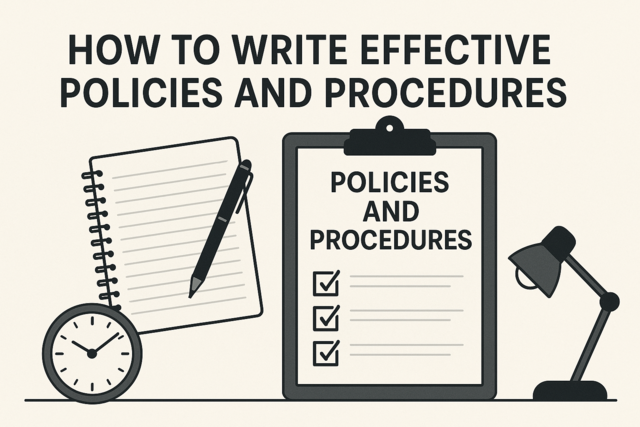Getting Started Resume Writing
Because employers rely so heavily on the resume, it is important to have one that is well crafted and professional looking. Most job openings are very competitive, so the candidate who is able to present him- or herself in the best light has an advantage. In most cases, you will not be hired based on your resume alone, but it will be instrumental in helping you to be called for an interview.
Objectives
In this article, you will be introduced to the premise of resumes and how they are used.
- What will this course do for you?
- What is a resume?
- How and why are resumes used?
One of the most important tools in a job seeker's arsenal is the resume. Simply put, this document sums up your work and life experience in an extremely brief, easy-to-read format. Prospective employers are able to review the resume to get a sense of the candidate's skills and suitability for the job at hand. Most employers will require you to submit a resume, and often you will need to complete an application and write a cover letter.
This article is designed to go in-depth to help you recognize what you should and should not include in a resume. In addition, it will help you to determine the right approach and layout for your field, experience, and desire. It is not a collection of resume templates, as those can be easily found online. Instead, this article will give you the knowledge that is needed to make sure that you are writing the strongest content possible. You will then be able to use or create a resume style that works for you. While it is certainly important to have an attractive resume, you need to focus on what an employer reads after the package has caught his or her eye. This is what is really going to land you the interview.
What Is a Resume?
A resume really is a representation of you. It introduces you to the employer when you are not able to sit down with him or her and do it yourself. Just as you would want to look and do your best if you were meeting face-to-face, you will want your resume to look and do its best when representing you. For this reason, it can be difficult to know what to include on a resume. After all, if it is supposed to be a representation of you, then it seems reasonable that you would want it to reflect your personality and talk about your personal life and ambitions, right?
In most cases, this is not how you approach resume writing. There are some strict guidelines that are used for this type of document, and if you do not follow them, you can knock yourself out of the running. We will talk more about the Dos and Don'ts later in this course. For now, realize that your resume will need to focus on the most relevant (to the job) aspects of your life. If it is strong enough to get you past the first round, then you will have the opportunity to dazzle the employer with your personality once you get to the interview.
In most cases, your resume will create the employer's first impression of you. He or she will make decisions based upon both the content and the presentation of your resume. Your goal, of course, is to make the best first impression possible. You can almost think of it as an advertisement that "sells" the potential employer on the idea of why he or she should consider you for the job. Just like most ads, the "customer" is only going to look at it for a few seconds, so you really need to give them every reason to keep reading and thinking about you. You have an average of about 15-30 seconds to catch their attention.
How and Why Are They Used?
Two parties will be using your resume. First, you will be using it to convince an employer that you are one of the top candidates for the job. By putting in the time and effort needed, you will be showing the employer that you are a professional, that you have the desire needed to be an excellent employee, and that you are a great fit for the job that he or she is offering. You will show how your experience and background is relevant and why you should be getting a call for an interview.
The employer is the second party that will use your resume. He or she uses it to help pre-screen candidates for a job. Rather than taking the time to meet with each individual applicant, the employer can sit down with a stack of resumes and compare the candidates' qualifications. This allows the employer to save a considerable amount of time by discarding those that appear not to be a good fit for the position and only calling the most qualified applicants in for an interview.
It may not always seem fair to be judged based on a few facts on a sheet of paper, but employers simply have to have some sort of method for narrowing down the candidate pool. Even if you are someone who does better in person than on paper, you will likely still need to utilize the resume process to be hired for the job that you want.
There are methods you can use to make your resume as strong as possible so that it will get you an interview rather than ending up in the office trashcan. We will spend quite a bit of time looking at these methods throughout this course. If you come across ideas that you think are especially useful for you, be sure to jot them down or even print out the course and make notes on the page so that you can remember them when you are actually composing your resume.
Types of Resumes
There are several different approaches to resume writing, and it can be confusing to decide which is best. This section will look at the four basic resume types and will give some suggestions for when to consider using each. Whether you are new to the workforce, changing careers, or have been in the same field for years, there is a perfect resume style to present your skills and experience.
Objectives
In this section, you will learn about the four main types of resumes and when each is the most appropriate.
- What are the main types of resumes?
- What is the difference among these types?
- When should each type be considered?
The Four Main Resume Types
If you are doing research to write your resume, you may find that there are numerous choices to make. One of the most important choices is the type of resume that you want to create. While there are a variety of styles or types of resumes, you can generally choose from one of the following four, depending upon your field and your background.
- Chronological.
- Functional.
- Combination.
- Curricula Vitae.
The Chronological Resume
The chronological resume gets its name from the fact that you list your work history according to dates. With this type of resume, you will describe your most recent job first and will then work backward, describing each prior job that you have held. Employers often like this type of resume because it is easy to get a quick overview of your work history. They can see how you have progressed throughout your career and how long you were at each position, as well as to take note of any gaps that appear in the timeline.
This type of resume is probably the most commonly used today. It looks especially good for someone who has worked in the same industry for a long time, or who wants to demonstrate how his or her skills have grown along with the job history. It is often the preferred resume type for job seekers who have a really solid work history, for those who have not had numerous jobs (especially for short periods of time), and for those without major gaps in employment.
You may find that a chronological resume is best in the following situations.
- You have been in the same field for a while, and your experience shows your progress.
- You have few gaps in employment and are able to demonstrate your loyalty and work ethic.
- You are utilizing the services of a recruiter or headhunter.
- You are applying for jobs in more "conservative" fields such as law or finance.
- You are seeking certain types of international employment.
The Functional Resume
The functional resume focuses more on a candidate's skills than on his or her job history. The skills are usually grouped and categorized in order to highlight the applicant's specific strengths and experiences. Basically, you might choose this type of resume to highlight what you can do rather than where and when you gained your experience.
There are several advantages to the functional resume, although there are downsides, too. The best aspects include the fact that it minimizes the impact if you have had gaps in employment or if you have had several jobs for shorter periods. Many feel that this type of resume can also help to reduce age discrimination, as the lack of dates means that a potential employer would not necessarily realize if the candidate has already been in the workforce for 20 years. It can also be advantageous to brand new job seekers, as you can list skills learned through internships or in classes without it being as obvious that you do not have actual paid experience.
While there are a lot of reasons to consider a functional resume, take into consideration that most employers will be expecting a chronological resume. With only a few seconds to get them to take a closer look, doing something unexpected might work against you. In addition, employers know the reasons that many applicants choose to write a functional resume, so it could end up working against you in the end.
You might choose a functional resume layout in the following situations.
- You have been out of the workforce for an extended period.
- You are trying to break into a new field, including military transitioners (those coming from the military and are starting new civilian careers).
- You are new to the workforce or have little relevant paid experience.
- You are overqualified for the position that you want to attain.
- You want to de-emphasize the length of your job history to avoid age discrimination.
The Combination Resume
As the name implies, this type of resume combines aspects of both the chronological and the functional approaches. It combines the skills that are the focus of the functional resume with the timeline work history of the chronological resume. A combination resume can be a great tool for applicants who have a solid job history but also want to include relevant skills and experiences they gained through other means. The downside to this type of resume is that it can sometimes get a little too lengthy.
There are a number of reasons to consider using a combination resume, including the following.
- You want to emphasize skills but do not want to alienate those expecting a chronological resume
- You have extensive volunteer or other unpaid work experience that is relevant.
- You plan to utilize online job boards that require some of the features of a chronological resume.
- You want more flexibility to "tweak" your resume each time you submit it.
- Your work experience is in unrelated fields but you want to emphasize transferrable skills.
Curricula Vitae
Curricula vitae (CV) are related to resumes, but they are actually quite different. They are used in certain fields, such as education and medicine. Rather than being a brief overview, like a resume, curricula vitae are often much longer and are more of a narrative than a targeted list of jobs, skills, and achievements. For example, a CV might include sections for publications, speaking engagements, research grants, conferences, and more. They are used extensively outside of the U.S., so if you are looking for international employment, it is worthwhile to see if a CV is something you should consider writing. Each field may have different requirements for how to format the CV, so it is always recommended to get some advice and guidance when creating one.
Making the Choice
It may take a little work to determine which resume type is the best option for you. Perhaps there is an aspect of your work history that makes the decision seem obvious. For example, if you are returning to work after a break to raise children, you may feel that a functional resume is simply the best choice. Before making a solid decision, though, you may wish to talk to professionals already in your field to get a better understanding of what is expected. In some fields, like banking, the functional resume is not appreciated and may hurt your chances.
One way to ensure the best outcome is to create more than one type of resume. You can then show it to people in the field to gauge which will be the most beneficial for you. You may also find that you can benefit by using one type in some situations and another type in different situations.
























